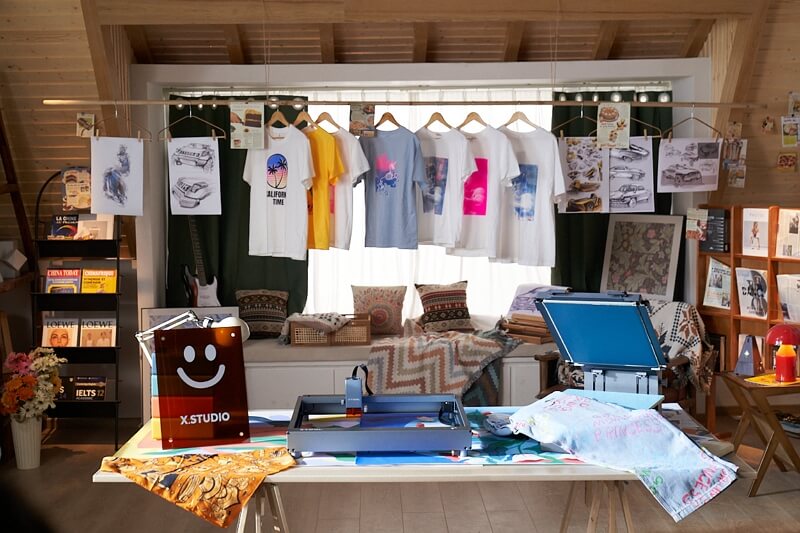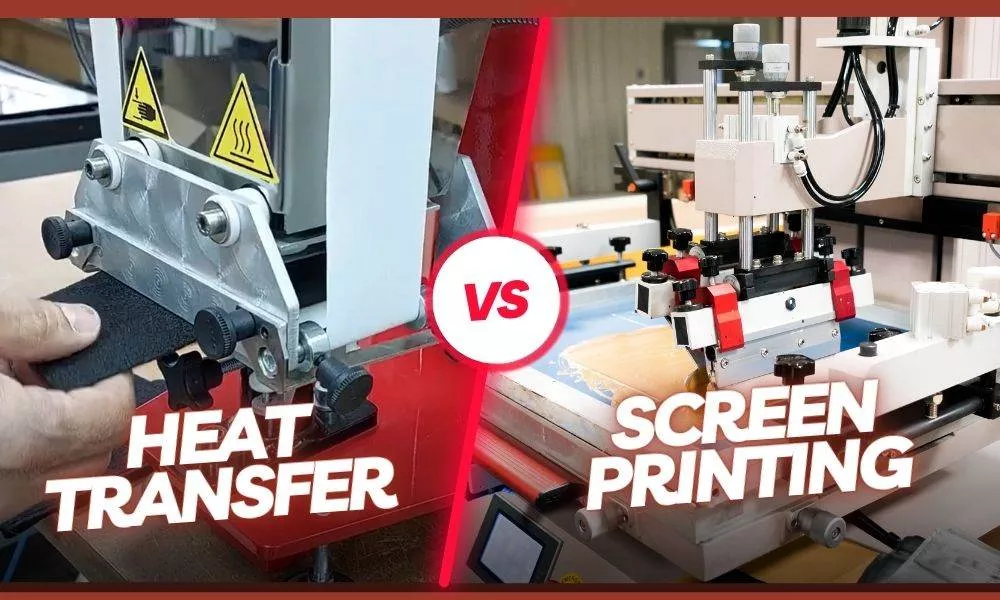The Buzz on Tx Tees
The Buzz on Tx Tees
Blog Article
Unknown Facts About Tx Tees
Table of ContentsNot known Factual Statements About Tx Tees The Best Strategy To Use For Tx TeesThe Tx Tees IdeasAll about Tx TeesThe Main Principles Of Tx Tees About Tx TeesTx Tees for Dummies
Include up other prices, like the number of utilities it takes to run the shop and the expense of ink and solution per style. Take the print below.The solution should only be a couple of cents given that you 'd just require to coat one screen for this task. How much should you bill per t shirt to make a profit? Typically, printers try to make up to 45% earnings on a print work. Right here's a table to assist you establish that: total price per product percent of preferred revenue as a decimal (instance:.25 or.45) profit made per product per task Currently let's discuss the earnings of DTF.

With DTF, you can print a handful of t shirts, or just one. Both display printing and DTF have their specific niches in the world.
Tx Tees - An Overview
The most effective way to recognize? Ask about and see what printing shop like yours are doing. custom t-shirt design. Attempt both out and see which you like better
When you're selecting what kind of printing approach to make use of for printing your artwork styles on your garments, it is essential that you know the differences between these 2 strategies so you can take full advantage of outcomes while decreasing prices. Display printing is the most commonly used method for printing designs on fabrics.
DTG printing is additionally known as area or direct to garment printing since it prints only what is needed as opposed to making a screen as screen printers do. https://txtees.godaddysites.com/. Display printing functions by screen filler squeegee display printing ink screen mesh screen, then moving the image to garment making use of heat and/or stress
The DTG printer utilizes unique dye-sublimation inks that are applied right into a pre-designed image by an electronic printing system. The inks come to be part of the material, enabling vibrant shades and extraordinary information. It's likewise called place or direct to garment printing due to the fact that it prints just what is required rather than making a display as display printers do.
Indicators on Tx Tees You Should Know
It's much faster - you can print a fullcolor picture in mins, as opposed to hours for display printing. Second, there's no established up time or expenses included - you can print any type of layout you such as, without having to create a screen. Third, there's no waste - because display printers screen print one design each time, they have to screen each color separately.
The paper is extremely expensive and can only be utilized when. Once it's published on, it needs to be disposed of. - The preliminary acquisition rate is less than the ahead of time financial investment of DTG printers- You can publish multi-color layouts one display at once rather of having to print each color separately like DTG printing.

Not known Facts About Tx Tees
However, rather than utilizing display mesh as screen printers do, dye sublimation printers make use of laser technology to move your images onto garments or paper. A heat procedure moves the dye from its solid-state directly into the gas stage which subsequently integrates it onto fabric substrates when they are swiftly warmed to high temperatures under high stress.
Sublimation printing is environmentally friendly. It utilizes much Our site less water than screenprinting, and because it doesn't include using harmful solvents, it's safe for all kinds of apparel. The dye sublimation inks are likewise unsmelling when cured, unlike screen printers that utilize unsafe chemicals during the display printing process that leave behind an unpleasant odor.
They likewise save cash on costly devices like exposure systems considering that dye sublimation printers don't require a UV exposure unit or a flash cure oven that is usually utilized in screen printing (embroidery shop). What is straight to garment printing (DTG Printing)? DTG printing is a digital screenprinting process that prints directly onto textile making use of specialized inkjet printers
The Basic Principles Of Tx Tees
DTG printing uses numerous advantages over typical screenprinting, consisting of the ability to publish photo top quality images, greater shade vibrancy, and the ability to publish designs on darker textiles. DTG printers work by heating the fabric ink until it transforms into a gas. The gas after that permeates the fabric, bonding with the fibers to produce a permanent print.

Screen printers simply prepare their screen then begin publishing till they lack item or ink.- There is a large range of seasoned display printers throughout the globe, which can be helpful for newbies. - It's a slower procedure - display printers commonly need to wait on the ink to dry before they can publish the following color- Screen printers call for manual work, so there's a greater discovering contour and it takes longer to generate a high-quality layout- Display printing isn't as accurate as DTG printing, so you might obtain some "bleeding" of colors from one component of the picture onto one more if not done properly.
7 Easy Facts About Tx Tees Shown
Rather of utilizing display mesh as screen printers do, color sublimation printers use laser modern technology to transfer your photos onto garments or paper. A heat procedure moves the dye from its solid-state straight right into the gas phase which subsequently merges it onto textile substratums when they are swiftly heated to heats under high pressure.
Sublimation printing is eco-friendly. It utilizes much less water than screenprinting, and because it does not entail making use of harmful solvents, it's secure for all sorts of apparel. The color sublimation inks are likewise odor-free when treated, unlike display printers that use unsafe chemicals during the display printing procedure that leave an unpleasant odor.
They likewise conserve money on costly devices like direct exposure systems considering that color sublimation printers do not require a UV exposure system or a flash remedy stove that is generally utilized in display printing. What is straight to garment printing (DTG Printing)? DTG printing is an electronic screenprinting procedure that publishes straight onto textile using specialized inkjet printers.
How Tx Tees can Save You Time, Stress, and Money.
DTG printing provides lots of benefits over conventional screenprinting, including the ability to publish photo top quality photos, higher color vibrancy, and the capability to print designs on darker textiles. DTG printers function by heating up the fabric ink up until it turns into a gas. The gas after that penetrates the material, bonding with the fibers to produce a permanent print.
Report this page